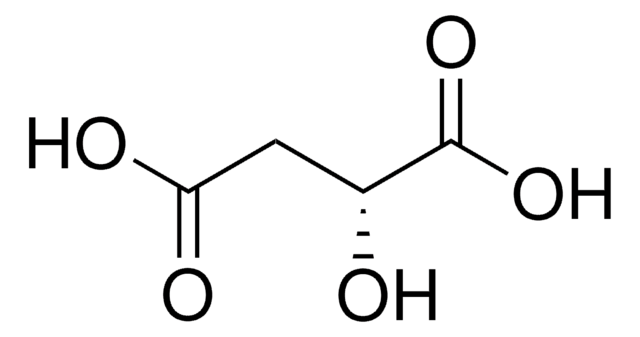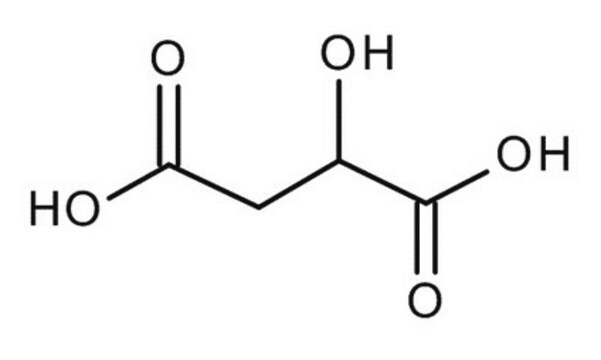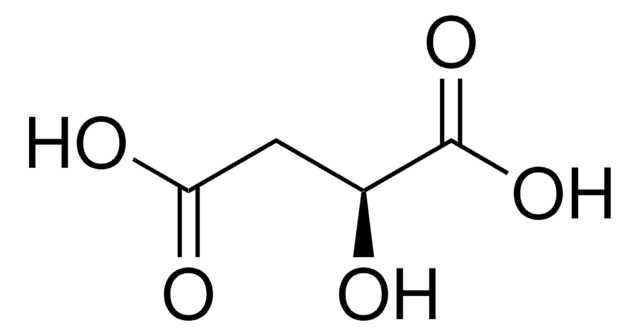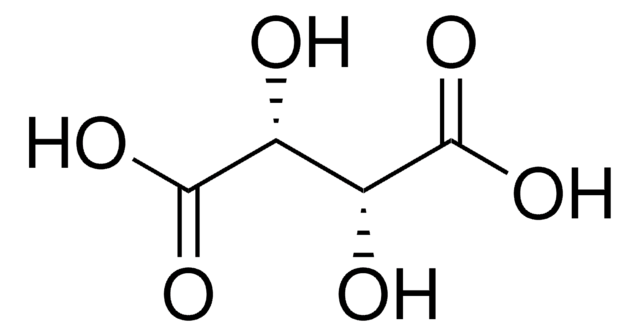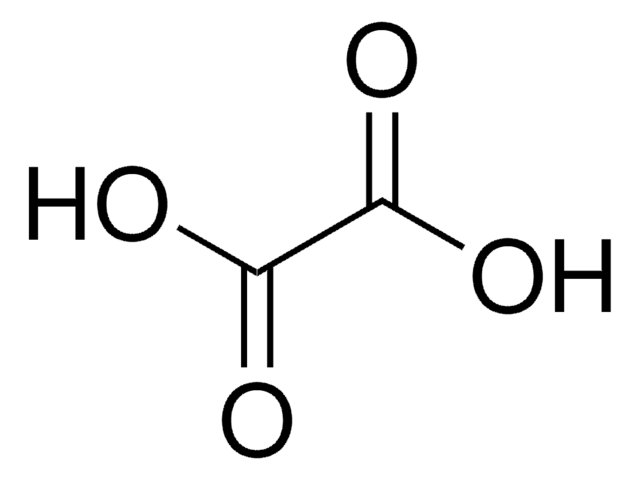94916
DL-Malic acid
analytical standard
Synonym(s):
(±)-2-Hydroxysuccinic acid, DL-Hydroxybutanedioic acid
About This Item
Recommended Products
grade
analytical standard
Quality Level
vapor density
4.6 (vs air)
vapor pressure
<0.1 mmHg ( 20 °C)
autoignition temp.
644 °F
shelf life
limited shelf life, expiry date on the label
concentration
95.0-105.0 wt. % (NaOH 0.1M, Titration)
technique(s)
HPLC: suitable
gas chromatography (GC): suitable
mp
131-133 °C (lit.)
solubility
H2O: soluble 646.6 g/L at 20 °C
application(s)
cleaning products
cosmetics
flavors and fragrances
food and beverages
personal care
format
neat
storage temp.
2-8°C
SMILES string
OC(CC(O)=O)C(O)=O
InChI
1S/C4H6O5/c5-2(4(8)9)1-3(6)7/h2,5H,1H2,(H,6,7)(H,8,9)
InChI key
BJEPYKJPYRNKOW-UHFFFAOYSA-N
Looking for similar products? Visit Product Comparison Guide
Related Categories
General description
Find all available reference materials for compounds listed in 10/2011 here
Application
Signal Word
Warning
Hazard Statements
Precautionary Statements
Hazard Classifications
Eye Irrit. 2
Storage Class Code
11 - Combustible Solids
WGK
WGK 1
Flash Point(F)
397.4 °F
Flash Point(C)
203 °C
Choose from one of the most recent versions:
Certificates of Analysis (COA)
Don't see the Right Version?
If you require a particular version, you can look up a specific certificate by the Lot or Batch number.
Already Own This Product?
Find documentation for the products that you have recently purchased in the Document Library.
Customers Also Viewed
Protocols
Separation of Pyruvic acid, United States Pharmacopeia (USP) Reference Standard; Tartaric acid, United States Pharmacopeia (USP) Reference Standard; Citric acid, United States Pharmacopeia (USP) Reference Standard; Malic acid, United States Pharmacopeia (USP) Reference Standard; L-Pyroglutamic acid, ≥99.0% (T); Lactic acid, United States Pharmacopeia (USP) Reference Standard; Acetic acid, ≥99.99% trace metals basis; Succinic acid, United States Pharmacopeia (USP) Reference Standard
Our team of scientists has experience in all areas of research including Life Science, Material Science, Chemical Synthesis, Chromatography, Analytical and many others.
Contact Technical Service
